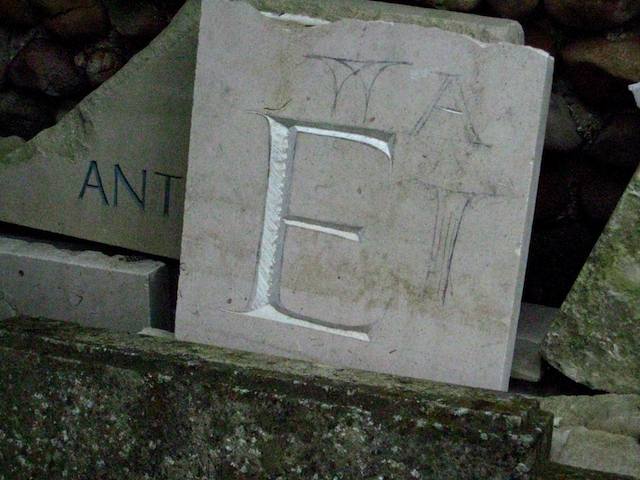
Seen in a Cambridge graveyard today.


Seen in a Cambridge graveyard today.
The real significance of the iPhone is that it’s a powerful Unix box that sits in your hand. But exactly how powerful is it? John Gruber approached the problem by asking: “which Mac does it most closely resemble in terms of specification?. Here’s his answer, which is based on some clever digging by Craig Hockenberry:
So, my answer to the question: the original “Pismo” G3 PowerBook. The numbers match up pretty closely: 400 MHz CPU, 100 MHz bus speed, 64 MB of RAM. (The higher-end Pismo had a 500 MHz CPU and 128 MB of RAM.) Even storage sizes are similar: hard drive options for the Pismo were 6, 12, or 18 GB. Another possible answer: the original blue-and-white Power Mac G3 — again, 400 MHz CPU, 100 MHz bus speed, 64-128 MB of RAM, and 6-12 GB hard drives. Think about that — in just nine years, the specs that then described Apple’s top-of-the-line desktop computer now describe their phone.
So — it took about eight years to get a G3 PowerBook into a phone. That means that in eight years’ time we’ll get a MacBook Pro into a phone.
Martin’s seen the light
I got a laptop from work last year with Windows Vista installed. I don’t use it much (I have a Vaio with XP which works fine), but it has become our media machine at home. Then yesterday it gave the message that the activation period had expired and this version of Windows was not valid. I tried entering the code on the sticker on the machine but no joy. I contacted tech guys at the ou who reckon I will need to plug it into the campus network for it to update. As I’m in Cardiff and in the US next week, this means it’s at least a couple of weeks before it will be usable again. I asked if they knew this would happen, and was told no. I wonder if other organizations know about this ‘feature’ of Vista? I’ve always been reasonably pragmatic about Windows as an OS, if everyone else uses it, then I’m happy to. But not being able to access a legitimate copy is rather stretching my agnosticism. So finally it may be a case of Linux, here I come.
… in 1869, a golden spike was driven at Promontory, Utah, marking the completion of the first transcontinental railroad in the United States. The spike was tapped into a prepared hole in a polished California laurel tie by Leland Stanford, one of the financiers of the railroad (and founder of Stanford University).

According to UnderstandingRace.org,
Chinese railroad workers present at the site were deliberately excluded from the photograph. Hired by the Central Pacific railroad, these Chinese workers operated under the most dangerous conditions, handling explosives used to blast through the Sierra Nevada mountains, resulting in higher fatalities than other workers.
Wonder what happened to the spike.
Later: Harry Metcalfe emailed:
When I was last there, in I think 1993, on the way by car from San Fran via Death Valley, the Apache Reservation in Utah, to Washington D.C. it was still there, but safely indoors, not still in the track.
According to Wikipedia (where else?) the spike and the special tie rail were replaced soon after the ceremony.
Still later: Found this (via Google Images):

Caption reads: “There were two golden spikes made for the ceremony joining the two halves of the Transcontinental Railroad… this one was the long-lost (but never used) twin of the spike that’s now at Stanford University. ”
The spike was donated by David Hewes, an entrepreneur who understood the importance of PR.
According to this source,
The spike is engraved on the top and on all four sides. On the head are the words, “The Last Spike”; on side one: “The Pacific Railroad ground broken Jany. 8th 1863, and complete May 8th 1869″(the ceremony was to take place on May 8th but was delayed by adverse weather and labor problems that held up the Union Pacific delegation); on side two: “Directors of the C.P.R.R. of Cal. Hon. Leland Stanford. C.P. Hunting. E.B. Crocker. Mark Hopkins. A.P. Stanford. E.H. Miller Jr.”; on side three: “Officer. Hon. Leland Stanford. Presdt. C.P. Huntington Vice Presdt. E.B. Crocker. Atty. Mark Hopkins. Tresr. Chas Crocker Ge. Supdt. E. H. Miller Jr. Secty. S. S. Montague. Chief Engr.”; and on side four: “May God continue the unity of our country, as this Railroad unites the two great Oceans of the world. Presented by David Hewes San Francisco.”